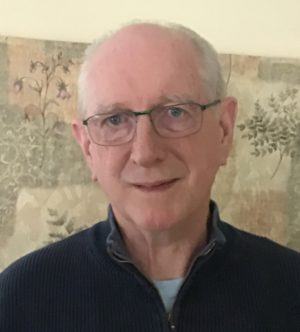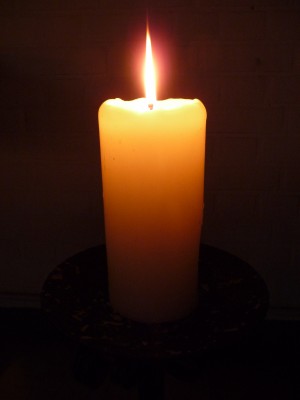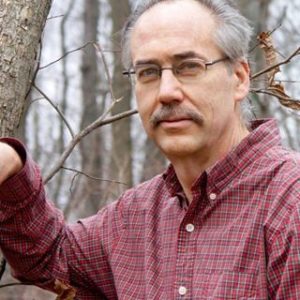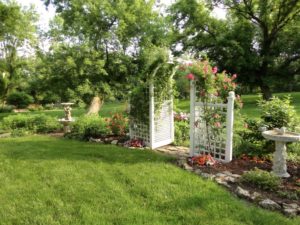Preview
March’s Spirit Journal announces a slight change of plans affecting this summer’s Eight-Day Intensive/Post Intensive Retreats, reminds us to save the dates for the 2019-2020 Living Flame program that launches in the fall, and shares information about the final 2019 Living Wisdom workshop coming up on April 13 with Jeff Ediger.
We are delighted to publish a lovely personal reflection on Centering Prayer by Sandy Janowski, one of the leaders of our summer retreats, along with the second installment of a very interesting new long-form piece of writing we think you’ll enjoy: Pluck the Day . . . for It Is Ripe, by Jeff Ediger.
Finally, we provide information about several additional contemplative activities that are coming up soon and may be of interest, along with Insights from Thich Nhat Hanh, Albert Einstein, Sharon Satzburg, and Llewellyn Vaughan-Lee.
As always, we invite you to let us know what you think about Spirit Journal – and start your side of the conversation – by emailing the editor at the address provided at the end of the newsletter. We look forward to hearing from you!
New Retreat Leader Announced for Eight-Day Intensive/Post-Intensive Retreat, July 14-21

It was previously announced that Alan Krema and Sandy Janowski would be leading this summer’s intensive retreat. Instead, John Holmes and Sandy Janowski will be the retreat leaders:
John Holmes has served Contemplative Outreach Chicago for five years and is a long-time practitioner of Centering Prayer. John is a graduate of the Center for Action and Contemplation Living School. He is a Spiritual Director and facilitates Spiritual Direction formation for Mayslake Ministries’ Sacred Presence Program.
Sandy Janowski is a retired Social Worker, Addiction Counselor and Community College Adjunct Instructor. In 2009 she was commissioned by the Institute of Spiritual Companionship and has been a practitioner of Centering Prayer since 2001. Sandy serves on the Circle of Service for Contemplative Outreach Chicago. She is a mother, grandmother, and great grandmother. Sandy recently write a personal reflection on Centering Prayer, which is published below.
An Intensive or Post-Intensive Retreat provides an opportunity to deepen the practice of Centering Prayer in an atmosphere of profound silence and community support. The retreats will take place simultaneously at the lovely Portiuncula Center in Frankfurt, Illinois. More information and an opportunity to register are available on the event page now.
The Living Flame Program, Starting October 12

Don’t forget to save the dates for this extraordinary national program, which was last offered here in Chicago more than ten years ago. The Living Flame includes seven full-day offerings of in-depth spiritual study presented over a seven to nine-month period by commissioned presenters from the various Contemplative Outreach Service Teams.
The Living Flame workshops will take place at Mary Seat of Wisdom Church in Park Ridge. Specific dates are:
In 2019
October 12 Deepening Our Centering Prayer Practice
November 9 Lectio Divina
December 7 The Human Condition
In 2020
February 1 Divine Therapy
March 7 The Dark Night of Sense
March 28 The Welcoming Prayer Practice
April 18 The Discernment Practice
More information and an opportunity to register will be available on our website soon.
“Cultivating a Listening Heart” with Jeff Ediger Concludes the 2019 Living Wisdom Program on April 13

The last of our four full-day Saturday Living Wisdom workshops takes place April 13 at the Tau Center in Wheaton. The Living Wisdom Program’s vision is to deepen the contemplative wisdom in each participant. All are welcome – if you have not attended the first three workshops, that’s not a problem. Please join us!
The April 13 workshop will awaken participants to images of listening which recognize it as having its own agency, independent of speech, yet capable of in-tune-ment with a multitude of voices, some of which can only be creatively discerned. It will also open us up to the heart’s capacity to sound the depths not just of what is said, but “the heart of the matter.” And we will consider how such modes of attention are particularly useful for listening to “pregnant silence,” the preferred mode of divine eloquence and a defining characteristic of human being. While it is important to resist the reduction of listening to mere “skill,” we will also consider practices which facilitate the cultivation of a listening heart.
An interviewer once asked Mother Teresa, “When you pray, what do you say to God?” She replied, “I don’t talk, I simply listen.” “Ah, then,” he asked, “what is it that God says to you…?” “He also doesn’t talk,” she said. “He also simply listens.”
For complete Living Wisdom program information and registration, please visit the Living Wisdom event page.
Personal Reflection: My Experience with Centering Prayer
by Sandy Janowski
[Sandy serves as coordinator for the many Centering Prayer group facilitators throughout our region. To find a prayer group near you, click here. Sandy wrote this essay for her church’s newsletter and wanted to share it with you.]
In a nutshell, centering prayer is my daily prayer practice which has brought me into a deep … and deepening … relationship with God. I have come to realize that, as much I wanted a relationship with God, God desired me even more. It’s a love story.
I found centering prayer by accident. Let’s say I bumped into it. It was 2001 and I just moved back to Chicagoland from Grand Rapids. I went to the Passionate Monastery on Talcott and Harlem (no longer there) to buy a prayer card for a friend in need. It was a Saturday morning and cars were parked in the circle driveway. Curious, as I purchased the prayer card, I asked the receptionist what was going on. She said centering prayer. “It’s every Saturday morning, you can come.” And so, I did.
Other Upcoming Events, Retreats, and Conferences
Here are some additional contemplative activities that may be of interest:
Ongoing Centering Prayer “11th Step” Program – Chicago
In AA 12-step programs, the 11th step is making a personal effort to get in touch with a Higher Power, however one understands it. Increasingly, people in 12-Step programs are deepening their relationships with their Higher Power using the method of Centering Prayer.
Here in the Chicago area, an ongoing Centering Prayer-based 11th step group meets on Fridays at 6:45pm in conference room “C” on the 7th floor of the Community First Medical Center, 5645 W. Addison Street, Chicago. For further information on this program, please contact Philip Lo Dolce — stuffer1@ameritech.net.)
Healing Gardens Spring and Summer Programs Include Silent Saturdays, Two Enneagram Workshops and an Introductory Centering Prayer Workshop
 Healing Gardens at Stonehill Farm invites you to enjoy two acres of perennial gardens in a quiet wooded setting in St. Charles. A growing list of contemplative activities take place at Healing Gardens, including the following:
Healing Gardens at Stonehill Farm invites you to enjoy two acres of perennial gardens in a quiet wooded setting in St. Charles. A growing list of contemplative activities take place at Healing Gardens, including the following:
Level One Enneagram Workshop, Saturday March 30 or June 29, 8:45am – 3:30pm
Introductory Centering Prayer Workshop, Saturday June 22, 9:00am – 3:30pm
Silent Saturdays, July 13 and August 31, 9:00am – noon
For more information and registration, please visit the Healing Gardens website.
Terry Patten at the Hilton Asmus Contemporary in Chicago Thursday April 4 and at The Well in LaGrange Park Saturday April 6
 Terry Patten, integral thinker and author of A New Republic of the Heart: an Ethos for Revolutionaries, plans two appearances in our area in early April. Terry also co-wrote the book Integral Life Practice with Ken Wilber and is a core team member at the Integral Institute. He is The Well’s 2019 Sacred Universe Award recipient.
Terry Patten, integral thinker and author of A New Republic of the Heart: an Ethos for Revolutionaries, plans two appearances in our area in early April. Terry also co-wrote the book Integral Life Practice with Ken Wilber and is a core team member at the Integral Institute. He is The Well’s 2019 Sacred Universe Award recipient.
The Thursday evening event in Chicago, which is free, is sponsored by the Global Purpose Movement. The talk intends to convey, in vivid personal terms, how each of us can become an active agent of wholeness in the midst of our crisis of fragmentation, and how we can come together in ways that plant, water and fertilize the seeds and seedlings of a next-stage human civilization. The event is scheduled for 6:30-9:00pm at Hilton Asmus Contemporary, 716 N Wells St, Chicago, IL, 60654
Saturday’s day-long experiential workshop at The Well will explore the big questions we face, including: How do we bring our spiritual life face-to-face with our daunting civilizational predicament? What do we mean by an “integral approach?” How do we cultivate a culture that reflects love in all of our systems? The Well Spirituality Center is located in LaGrange Park, Illinois. For more information and registration, please visit The Well’s website.
Claret Center Open House Saturday May 4 in Hyde Park
The Claret Center cordially invites you to attend an Open House at their Hyde Park campus. The Center’s mission is to help people become whole in mind, body and spirit, and they do this in three ways – through Psychotherapy, Spiritual Direction and Body-Centered Therapies (acupuncture, cranial-sacral massage and therapeutic massage). Meet with practitioners, learn about the programs, tour the facility and sign-up for a brief sample session regarding any of the services. Refreshments will be provided. More information at the Claret Center website.
Eight-Day Intensive/Post-Intensive Retreats near St. Louis, June 7-13
If our July retreat dates don’t work for you, or if you just feel like taking a little trip to the St. Louis area, you may want to consider these extended retreats offered by Contemplative Outreach of St. Louis at the Marianist Retreat Center in Eureka Missouri.
The retreat director is Fr. Bill Sheehan, OMI. Fr. Bill has been involved with Contemplative Outreach since 1983. During that time he has led many Centering Prayer workshops and retreats in different parts of the country. With a Masters degree in Formative Spirituality from Duquesne University, Fr. Bill has broad experience in pastoral ministry, serving the Archdiocese of Miami, Florida in the Office of Lay Ministry, and as Director of Ministry to Priests. Fr. Bill has served as provincial of the Oblates Eastern America Province as well as Oblate Formation Director and Novice Director.
For further information and registration, please visit the Contemplative Outreach of St. Louis website.
Pluck the Day . . . for it is Ripe!
By Jeff Ediger
[If you missed Chapter 1 last month, you can catch up in the February edition of Spirit Journal.]
Chapter 2: Every Day Is Not Everyday
Better is one day in your courts
than a thousand elsewhere…
Psalm 84:9a
Okay. Okay. I admit it. Even if you agree—and you might not—that, in the previous chapter, I discovered the best time of day to fill one’s car with gas…so what? Is it really that important?[1] Maybe finding the best time to schedule a colonoscopy is worth noting. But aren’t there more significant life events? The best time of day to ask your boss for a raise? …to ask your beloved to marry you? …to say, “I’m sorry”?
But maybe the question isn’t the problem. Maybe the problem is with the day itself! Who cares about the day? Days are a dime a dozen! The day is so ordinary, so everyday. The day is what you get through, not something you celebrate.
Now years. Years are important! Everyone counts the years—the new year, anniversaries, birthdays. Years we celebrate.
But days? You know who celebrates the day? People who get cancer. A person gets cancer and she starts appreciating each and every day she is above ground. Most of us are like that. We have to be brought to our knees to value such a commonplace measure as the day.[2]
At least I did.
Insights
We are here to awaken from our illusion of separateness.
– Thich Nhat Hanh
A human being is part of the whole world, called by us “Universe,” a part limited in time and space. He experiences himself, his thoughts and feelings as something separate from the rest — a kind of optical delusion of his consciousness. The striving to free oneself from this delusion is the one issue of true religion. Not to nourish the delusion but to try to overcome it is the way to reach the attainable measure of peace of mind.
– Albert Einstein
Meditation is a microcosm, a model, a mirror. The skills we practice when we sit are transferable to the rest of our lives.
– Sharon Saltzberg
A simple and essential spiritual truth teaches that only being awake in the moment is real. Only then can the strawberry be tasted in its full sweetness, the plum blossom be seen in its fragile beauty, without memory or preconception. This is the Zen moment of satori, when we are fully present in the experience, in life, as it is. It is a moment “in and out of time,” which we usually glimpse only for an instant before the thoughts and the patterns of our consciousness cloud over our eyes.
– Llewellyn Vaughan-Lee
Your Turn
As always, you are invited to write in to comment on or add to any of the items in Spirit Journal. Let us know if you are aware of an upcoming event you think others should know about, or send us an inspirational quote you’d like to share, or information about a book, website, podcast, or video you recommend. You can contribute by emailing the newsletter editor at news@centeringprayerchicago.org.